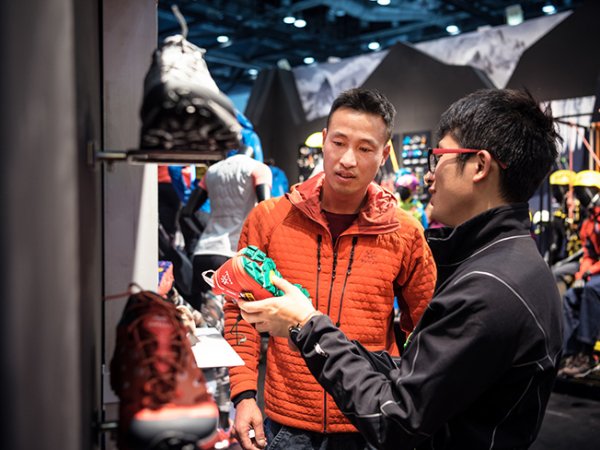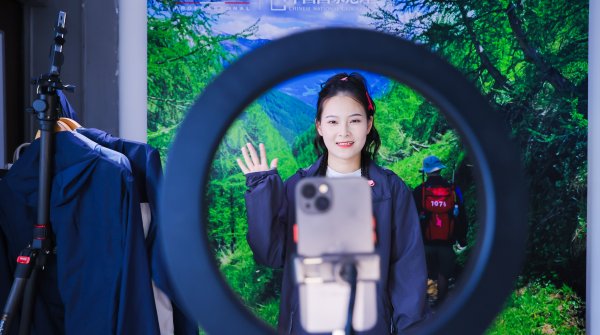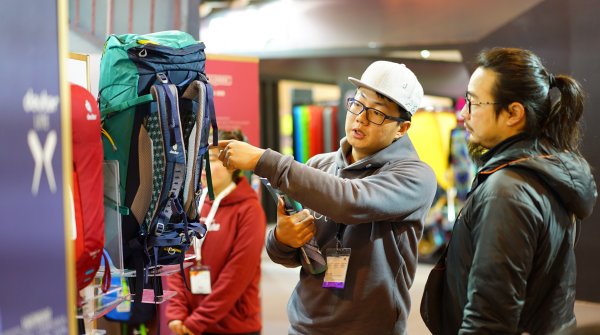Expert Louisa Smith explains what Chinese consumers now value, how physical and digital concepts go hand in hand and why you need to invest in community.
With the 'Healthy China 2030' government initiative in full force, many brands continue investing and growing in China, but the retail scene is changing. According to World Data Lab, the 2030 dateline calculates to approximately 1 billion potential consumers, a 15% increase compared to 2024. Consumers who have a more comprehensive understanding of the benefits of health and fitness.
The consumer's attitude is also changing. China's Gen Z and the up-and-coming Alphas drive continuous growth in this sector, but it isn't all for international brands. Domestic brands are top-rated, giving global brands equal measure in performance and design. Cultural confidence is growing with consumers, and they are proud to be Chinese and home-grown brands are tying into that.
The government initiative to get the population moving is working; encouraged by the Olympic Games in Beijing in 2008, the market has grown exponentially. The potential of this market is enormous, but it isn’t a quick hit; anyone looking to sell in China needs to play the long game, as there is plenty of competition, not just from international brands, but from emerging domestic brands that are holding their own.
What is different about Chinese retail is that physical stores are essential — almost like showrooms — but also in terms of presence and sales. What is evident on a global level is that fashion and fitness, mental and physical health, and connection to a community are paving the way for brands to be at the forefront of the consumer's wardrobe for all occasions. Brands with a manufacturing partner will find it more amiable to develop retail partnerships within the country, as you must adapt to sizing and colour tendencies that the manufacturing base knows of.
Anta Sports is China's largest domestic sports company, trailing Nike and Adidas. It is a relative newcomer compared to established brands, founded in 1994 as a small shoe manufacturer. Anta Sports is also the largest shareholder of Amer Sports Inc., a global group of sports and outdoor brands, including Peak Performance, Arc'teryx, Salomon, Wilson, Peak Performance, and Atomic, listed on the NY Stock Exchange in February this year.
Anta's investment was a savvy move, evident in the international brands featured on the retail scene in China. In January this year, Canadian high-end outdoor apparel label Arc'teryx officially opened the doors to its Shanghai concept space, the Arc'teryx Museum. The West Nanjing Road flagship boasts the most extensive primitive landscape experience in the world and is in addition to the 63 Arc'teryx stores in China. Anta Sports also acquired Fila and Maia Active, a Chinese designer sports brand, in 2023.

Investment into a new market is crucial, but it isn't just monetary investment that will see a return. Investment in understanding the consumer base and connecting with the community is as essential as creating just a physical product. Lululemon is one of the most sought-after brands for the Chinese consumer, which made me wonder why. The prices are costly.
Posting a 53% revenue growth increase solely for the China market in Q3 of 2023, Lululemon Athletica's decade-long development into the market has made an impact. Not just in the 126 stores it has throughout China but also in the importance it places on Chinese brand ambassadors to educate the consumer on the right product for the suitable event. The brand also places a lot of emphasis on engaging with the consumer through digital applications plus physical community-based events that connect with the consumer.
Swiss-designed ON Running has 19 physical stores in China, but its online presence also accounts for sales. In addition, ON Running has created a social running group app that allows consumers to meet and connect—again, this digital interaction is valuable and welcomed.
China's retail scene benefits from clustering similar brands together — as consumers' lifestyles and wish lists change. The DT51 is a new community-based shopping mall that opened last year. It looks like it has dropped from space into a residential area close to Beijing Olympic Park. The windowless structure with a chromatic facade is far from traditional shopping malls. This cubist approach results in an industrial-style interior highlighting brands' equal visibility — concession-like and open-fronted.
The ground floor, as always, is the global beauty and cosmetic brands, often the products that make the luxury markets their money. The second has an eclectic mix of domestic and Western fashion brands, but the third floor is unique and dedicated to sports and outdoor brands.
From Lululemon, X-bionic to Kailua (a Chinese brand that is gaining a lot of popularity) through to Anta and Maia Active, it was a who's who of the industry from across the global to home-grown brands — that itself is interesting as nothing looked out of place in terms of design and merchandising. There was a level pegging of quality tools.
Investment in physical retail will continue. In China, visiting shopping districts and malls involves more than shopping. These areas are community-based and offer dining, leisure, strolling, gyms, and child care.
However, a digital platform is crucial in connecting with consumers, especially consumers in China. That is why, at ISPO Beijing, not only were brands showcased, but there was also an area dedicated to Tmall and the brands that have space and digital stores.
China is an e-commerce country — a digital-first economy, where physical money is barely seen being exchanged, as all consumption is digital, right down to a bottle of water or an apple. Unlike busy shopping malls and foreign shipping stores in Europe and the US, where consumers pass by with shopping bags, China is different. Many stores are used as an advertising front; you can only have brick-and-mortar with a digital platform where most purchases take place. And on digital sales, we aren’t just considering apps and static products but live sale streams, entertainment elements, and special e-commerce discount days.
When you work your way across a map of China from the East Coast inland, you realize the size of this country and its growth. Beijing and Shanghai fall into the premier tier cities, but second, third, and fourth-tier cities are growing and moving up the ranks. The potential is huge.
The advantage the sports and outdoor sector has in domestic sales growth compared to other sectors, such as tech or fashion, that are flagging is that there is a purpose. There is an end destination and point to performance products; not only do they clothe and protect, but these brands are essential in maintaining healthy mental and physical lifestyles.
Being present in China’s e-commerce market is crucial for brands to survive.
The invention of the special e-commerce holidays also creates a cleaner stream in terms of inventory, as brands know when it will hit.
- ‘Double 11’, the November 11th singles day launched by Alibaba, drives some of the highest e-commerce purchasing. ‘Double 12’, on December 12, was launched by e-commerce giants JD and Taobao in response to the popularity of Double 11 and is the last big e-commerce event of the year.
- Traditional days, including Valentine’s Day, hold firm, but so does QiXI, the Chinese Valentine’s Day on August 14.
- A relatively new one is 520, May 20, the Saying I Love You Day, as ‘Five Two Zero’ resembles I Love You.
These days, online purchasing can be generated through special offers, discounting, and free shipping. The downside is that returns, according to industry insiders, reach 50 percent, yet it still remains a profitable model.
 OutDoor by ISPOHow you benefit from communities as a brand
OutDoor by ISPOHow you benefit from communities as a brand







